 It’s thirteen degrees here this morning. The young pines are bending under the weight of heavy, wet snow, threatening to break, and the tall shrubs are splayed out like snow-covered wreaths strewn along the pathway I’ve shoveled to the house. Annie, our little terrier, thinks the snow is a platform across the patio out back; it creaks underfoot until it gives way and she has to tentatively leap her way back to me, falling through the snow. I had my own challenges this morning. My Honey Girl can pull on a cold, wet bathing suit without cringing—not me. But somehow I don’t mind stepping barefoot every morning and evening into the pair of leather clogs I keep by the back door for chicken care. They’re often wet from rain or full of snow. But this morning they were soaked and beginning to freeze. I teetered out in my nightgown and old bathrobe, trying to get settled into them, thinking about socks and whether or not they were worth the trouble. And then, in slow motion, a pitcher full of fresh water in one hand, metal water fount in the other, I stepped onto ice in front of the hen house. Into the air went both legs, both arms, the metal fount, the pitcher, and into the air high above me, the water. Down onto the ice came my back and, onto the snow, my head. The metal fount and the water pitcher followed with a thud, and, like a punch line, the water, which soaked me. At six o’clock on a cold morning, that is a jolt to the bones. I lay there surprised for a moment, and then laughing, as the hens rushed back and forth like a school of fish and Annie harrumphed through the snow to help. I love winter, but mornings like this, I think about California now and then, people eating al fresco with the golden sun beating down on their faces. It seems so civilized and so easy. After a hot bath to warm up and some clean, dry clothes, I joined my Sweet Boy in the kitchen and found him making lefse. California? Watching your 17-year old son making Norwegian lefse on a cold day and eating it together, the last tender pieces fresh from the griddle smeared with good butter and sprinkled with a little sugar, isn’t part of that picture. I’ll stay right here.
It’s thirteen degrees here this morning. The young pines are bending under the weight of heavy, wet snow, threatening to break, and the tall shrubs are splayed out like snow-covered wreaths strewn along the pathway I’ve shoveled to the house. Annie, our little terrier, thinks the snow is a platform across the patio out back; it creaks underfoot until it gives way and she has to tentatively leap her way back to me, falling through the snow. I had my own challenges this morning. My Honey Girl can pull on a cold, wet bathing suit without cringing—not me. But somehow I don’t mind stepping barefoot every morning and evening into the pair of leather clogs I keep by the back door for chicken care. They’re often wet from rain or full of snow. But this morning they were soaked and beginning to freeze. I teetered out in my nightgown and old bathrobe, trying to get settled into them, thinking about socks and whether or not they were worth the trouble. And then, in slow motion, a pitcher full of fresh water in one hand, metal water fount in the other, I stepped onto ice in front of the hen house. Into the air went both legs, both arms, the metal fount, the pitcher, and into the air high above me, the water. Down onto the ice came my back and, onto the snow, my head. The metal fount and the water pitcher followed with a thud, and, like a punch line, the water, which soaked me. At six o’clock on a cold morning, that is a jolt to the bones. I lay there surprised for a moment, and then laughing, as the hens rushed back and forth like a school of fish and Annie harrumphed through the snow to help. I love winter, but mornings like this, I think about California now and then, people eating al fresco with the golden sun beating down on their faces. It seems so civilized and so easy. After a hot bath to warm up and some clean, dry clothes, I joined my Sweet Boy in the kitchen and found him making lefse. California? Watching your 17-year old son making Norwegian lefse on a cold day and eating it together, the last tender pieces fresh from the griddle smeared with good butter and sprinkled with a little sugar, isn’t part of that picture. I’ll stay right here.
Lefse Tips:
- Lefse is Norwegian potato flat bread and is made using a few specialized tools. Lacking them, you may make a few substitutions. A potato masher may be used in place of a ricer. If you don’t have a corrugated rolling pin, sprinkle your conventional rolling pin with flour frequently and use a light touch when rolling. If you don’t have a lefse stick, you may use a thin, long spatula. Any smooth griddle will work well in lieu of a lefse griddle; electric griddles which allow you to set and maintain a specific temperature are most convenient.
- Use only russet potatoes, also known as baking potatoes. You’re looking for the ones with a dry, dusty brown skin. Using waxy potatoes, such as Yukon gold or red potatoes, adds too much moisture to the dough.
- Do not overcook your potatoes. You want them tender, but not waterlogged or mushy.
- Do not skip drying the potatoes overnight. It reduces moisture content, which affects the dough.
- Be sure your butter is fully melted and cooled a bit before it’s mixed thoroughly into the dough. Little bits of unmixed butter will bubble up through the lefse as it cooks.
- The dough will seem dry as it comes together. Don’t fret. It will come together nicely when squeezed in your hand.
- The moisture level of potatoes will affect your lefse dough. You may adjust and add a bit more flour or a bit more cream if the dough is too dry or too wet. If it rolls together smoothly in the palms of your hands without feeling sticky, you’re fine. Think of this as a gosh-and-by-golly recipe and relax.
- I use a little crimping technique which helps to keep the dough round as you roll. Roll the dough into a ball in the palms of your hand. Then flatten it a bit, patting it into a disc. Place the disc on a countertop and pinch the edges together as you rotate the disc. When you’re finished it will look like a little saucer with slightly upturned edges.
- Don’t be shy with the flour when you roll lefse. Your surface and rolling pin should be dusted liberally. Redust your surfaces frequently.
- If the lefse sticks, slide your lefse stick under it ever so gently and work to free it. I find that sliding the lefse stick under the dough repeatedly is better than trying to move it side to side.
- Roll from the center of the dough, turning it frequently. Use your lefse stick to flip it frequently as you roll.
- To turn lefse using a lefse stick, slide it under the dough, lift it quickly and confidently with a swift motion, and flip it over. Leave the stick under the dough, rolling it repeatedly in one direction until the lefse unfurls and the stick is freed.
- A hot, clean griddle will create the classic deep brown spots you’re looking for. I set mine on 500 degrees F.
Lefse
Yield: about 30 modest servings
Ingredients:
4 ½ pounds russet potatoes
1/3 c. heavy cream or half and half
½ c. unsalted butter, melted and cooled
1 t. salt
3 c. all purpose flour (I prefer King Arthur.)
Method: (The lefse tips above are more detailed.)
- Peel the potatoes, cut them in half or in thirds, and place them in a large pot of cold water.
- Cover the pot and bring the water to a boil over high heat. Remove the lid and adjust your heat to maintain an even high simmer. Boil the potatoes until they are tender and yield easily when pierced with a fork, about 25 minutes.
- Drain the potatoes in a colander and, when they are cool, rice them using a potato ricer.
- Cover the potatoes lightly and keep them in the refrigerator overnight.
- Add the cream or half and half and the butter and stir to mix well.
- Scatter the salt and flour across the potatoes and mix until just incorporated. Do not overmix. The dough will come together when you squeeze it in the palm of your hand.
- Heat a lefse griddle to 500 degrees F.
- Take an egg-sized ball of dough and roll it in the palms of your hands until it is smooth and uniform. Pat the ball into a disc and crimp the edges, if you wish.
- Using a corregated rolling pin, roll the dough on a countertop liberally dusted with flour, turning it frequently with a lefse stick, until it is so thin that you can see the countertop through it.
- Using a lefse stick, transfer the dough to the griddle and fry it until deep brown spots appear across its surface.
- Flip the lefse and fry the other side.
- Transfer each piece to a plate lined with paper or cloth towels and allow the lefse to cool.
- To serve, smear the lefse with softened good butter and sprinkle it with sugar, white or brown. Roll up each piece, and cut it in half.
- Lefse may be folded into quarters, wrapped in cellophane, and stored in the refrigerator for a few days. It may also be frozen.

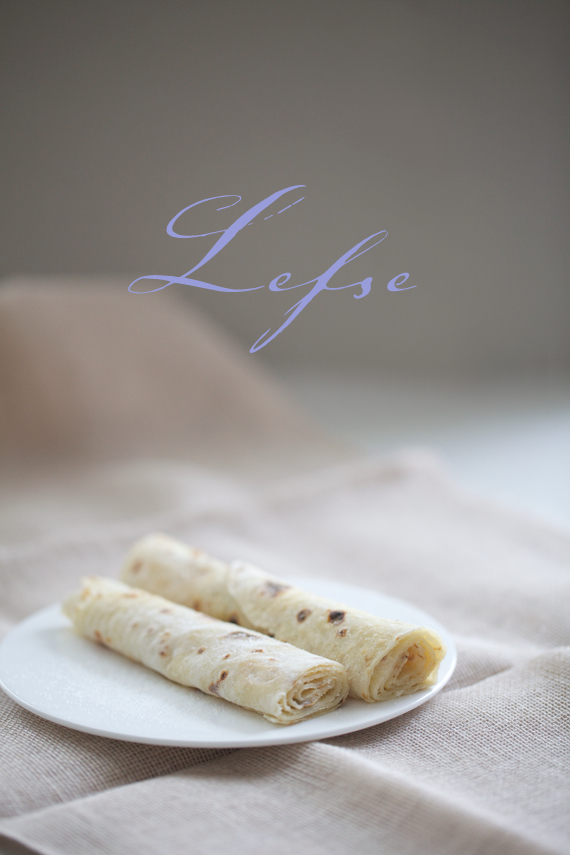

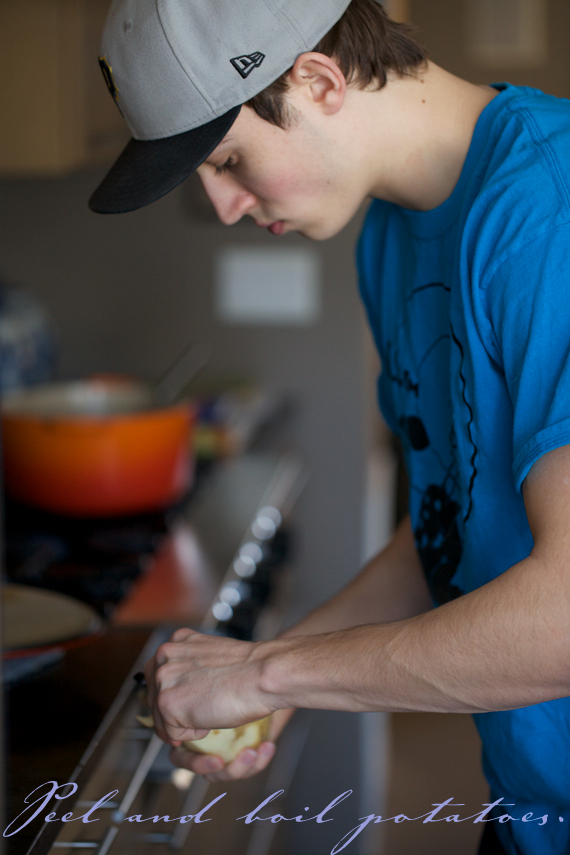
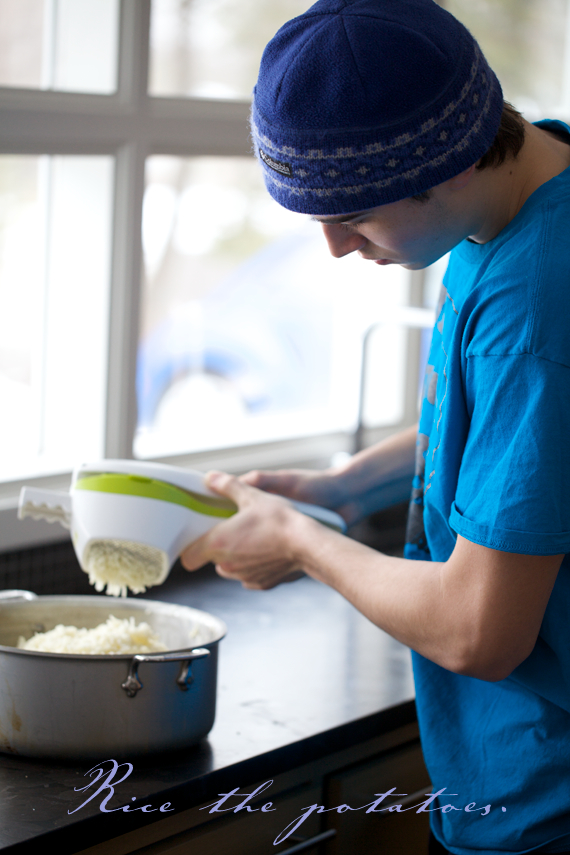

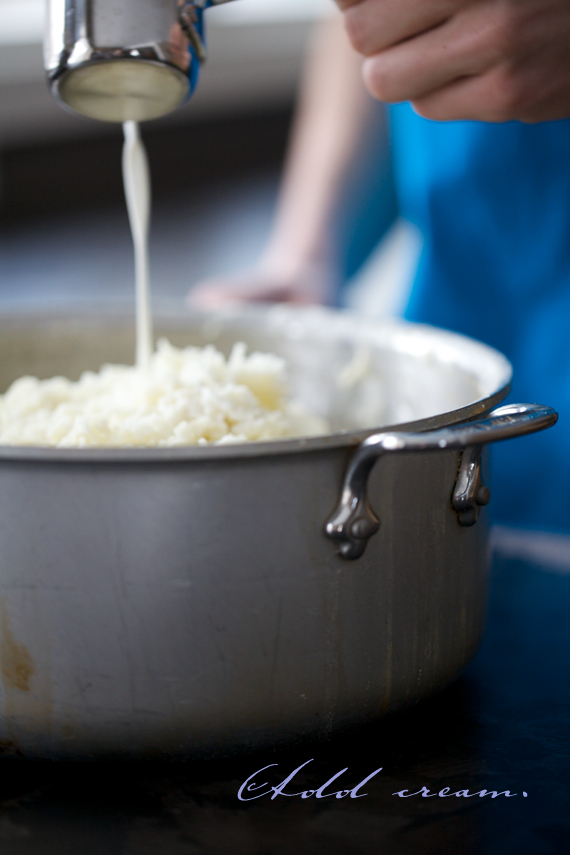


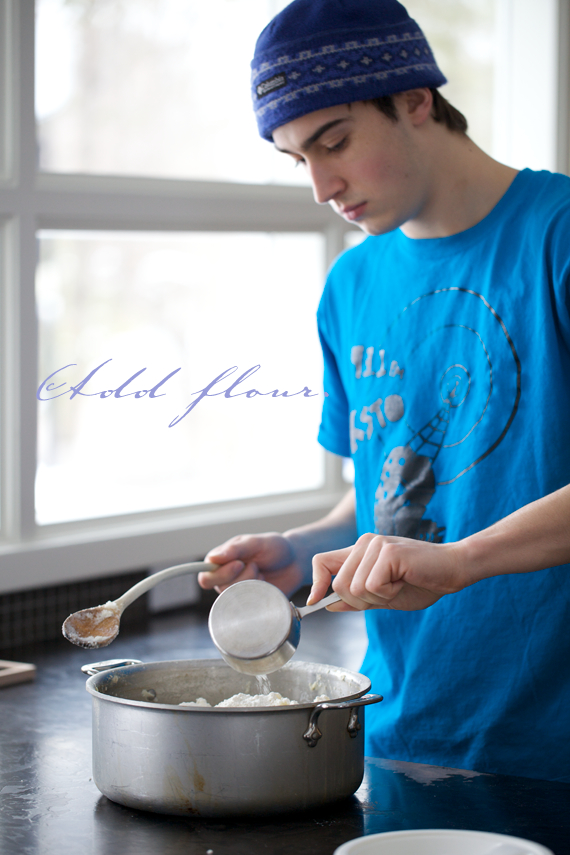



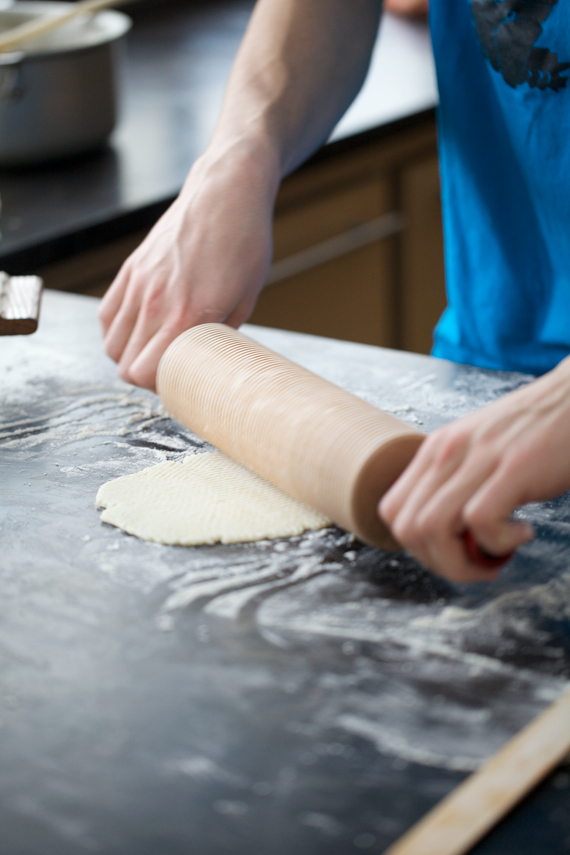
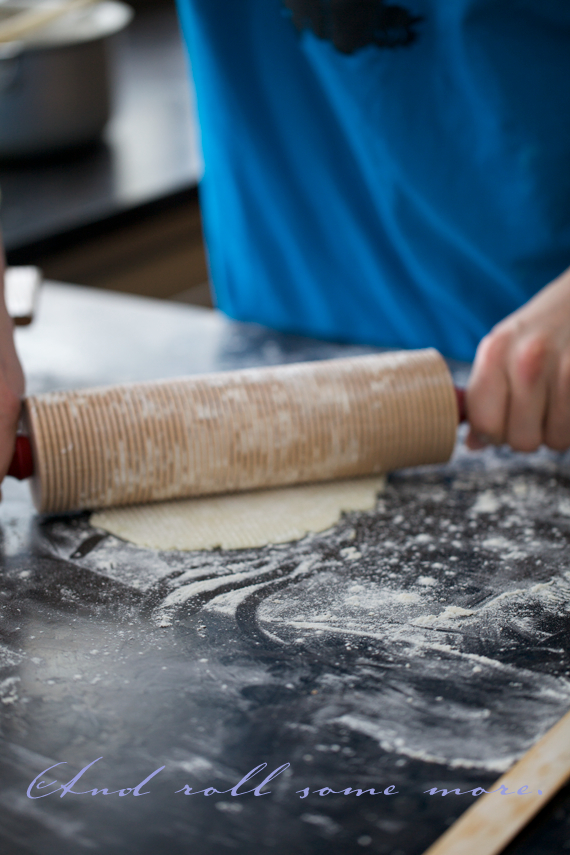



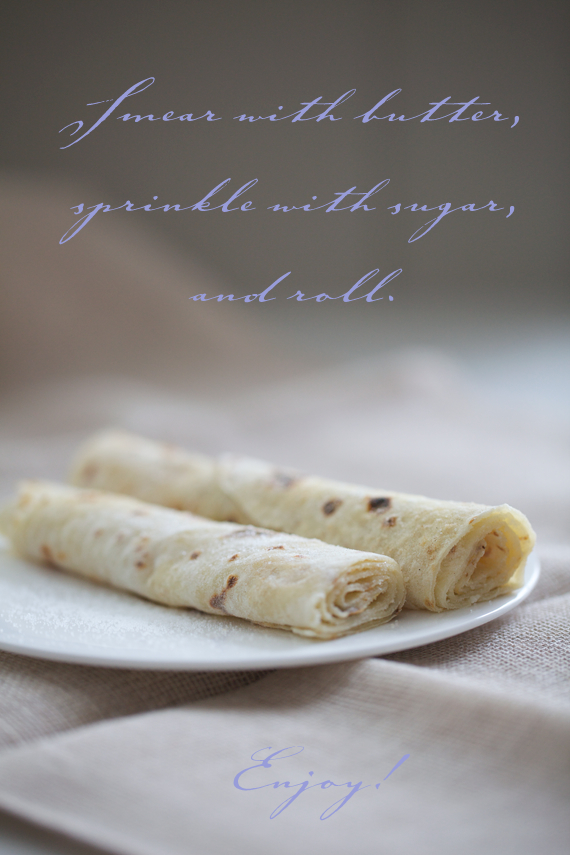





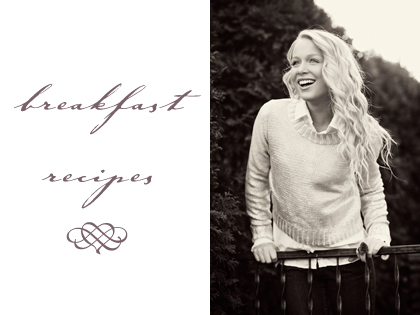

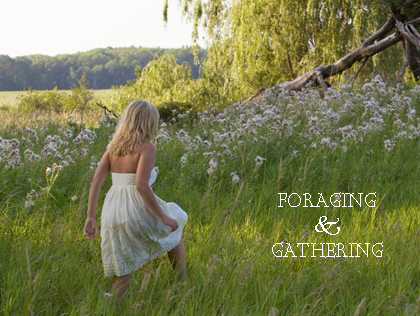
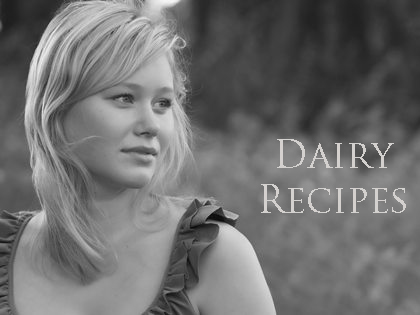










{ 10 comments… read them below or add one }
I love this post. It makes me wonder what food I have been missing out on if I didn’t live in NYC and I stayed in Wisconsin. My family has Norwegian and German heritage. Eh, I will keep checking back on your blog to see the lovely food! I never knew what that style of rolling pin is for, even though I have one. ; )
My goodness. Why have these never graced my stomach lining before? They look just PERFECT! (especially, as you mentioned, in gloomy weather. Even here, summer has given way to cold, damp, winds, and widespread flooding. It’s miserable, but I suspect anything potato-based would cheer me up enormously)
Thank you so much, Susan. Isn’t that funny. I’ve had a few moments like that myself with my grandparents’ cooking tools.
Lizzi, You will love them. Imagine gnocchi rolled paper thin, browned, buttered, and sugared. They’re a bit labor intensive, but homemade lefse (versus the store-bought stuff we get here) is amazing.
I spent many years in Poulsbo WA, also known as “Little Norway”. Lefse could be purchased at just about any grocery there but fresh lefse looks much better!
What a cool post, Laura.
I love it.
But I’m sick about your fall!
OUCH!
Thank you, Kris. xo
Barbie, How wonderful! We can buy it in grocery stores here around Christmastime, but it doesn’t compare to the tenderness of homemade.
That looks so yummy! Almost like a mega piece of potato chip!
Lim Pei Lin, They do like like giant potato chips in that photo! They’re quite supple, though, almost like a giant, pressed gnocci.